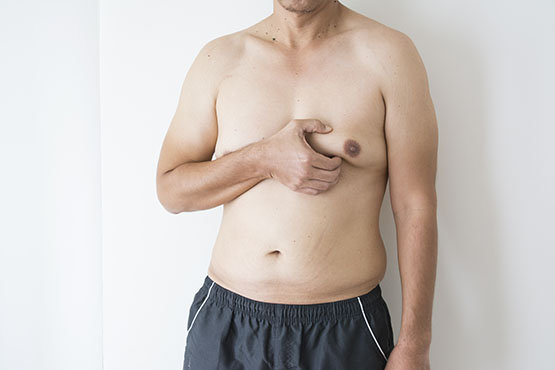
Also known as reduction mammaplasty, breast reduction removes excess breast fat, glandular tissue and skin to achieve a breast size in proportion with your body and to alleviate the discomfort associated with overly large breasts.
Important facts about the safety and risks of breast reduction
The decision to have breast reduction surgery is extremely personal and you’ll have to decide if the benefits will achieve your goals and if the risks and potential complications are acceptable.
Your plastic surgeon and/or staff will explain in detail the risks associated with surgery. You will be asked to sign consent forms to ensure that you fully understand the procedure you will undergo and any risks or potential complications.
The Risks include
- Unfavorable scarring
- Infection
- Changes in nipple or breast sensation, which may be temporary or permanent
- Anesthesia risks
- Bleeding (hematoma)
- Blood clots
- Poor wound healing
- Breast contour and shape irregularities
- Skin discoloration, permanent pigmentation changes, swelling and bruising
- Damage to deeper structures – such as nerves, blood vessels, muscles, and lungs – can occur and may be temporary or permanent
- Breast asymmetry
- Fluid accumulation
- Excessive firmness of the breast
- Potential inability to breastfeed
- Potential loss of skin/tissue of breast where incisions meet each other
- Potential partial or total loss of nipple and areola
- Deep vein thrombosis, cardiac and pulmonary complications
- Pain, which may persist
- Allergies to tape, suture materials and glues, blood products, topical preparations or injectable agents.
- Fatty tissue deep in the skin could die (fat necrosis)
- Possibility of revisional surgery
You should know that:
- Breast reduction surgery can interfere with certain diagnostic procedures
- Breast and nipple piercing can cause an infection
- Your ability to breastfeed following reduction mammaplasty may be limited; talk to your doctor if you are planning to nurse a baby
- The procedure can be performed at any age, but is best done when your breasts are fully developed
- Changes in the breasts during pregnancy can alter the outcomes of previous breast reduction surgery, as can significant weight fluctuations
Where will my surgery be performed?
The decision to have breast reduction surgery is extremely personal and you’ll have to decide if the benefits will achieve your goals and if the risks and potential complications are acceptable.
Your plastic surgeon and/or staff will explain in detail the risks associated with surgery. You will be asked to sign consent forms to ensure that you fully understand the procedure you will undergo and any risks or potential complications.
When you go home
If you experience shortness of breath, chest pains, or unusual heart beats, seek medical attention immediately. Should any of these complications occur, you may require hospitalization and additional treatment.
The practice of medicine and surgery is not an exact science. Although good results are expected, there is no guarantee. In some situations, it may not be possible to achieve optimal results with a single surgical procedures and another surgery may be necessary.
Be careful
Following your physician’s instructions is key to the success of your surgery. It is important that the surgical incisions are not subjected to excessive force, abrasion, or motion during the time of healing. Your doctor will give you specific instructions on how to care for yourself.
When you go home
Be sure to ask questions: It’s very important to address all your questions directly with your plastic surgeon. It is natural to feel some anxiety, whether excitement for the anticipated outcome or preoperative stress. Discuss these feelings with your plastic surgeon
